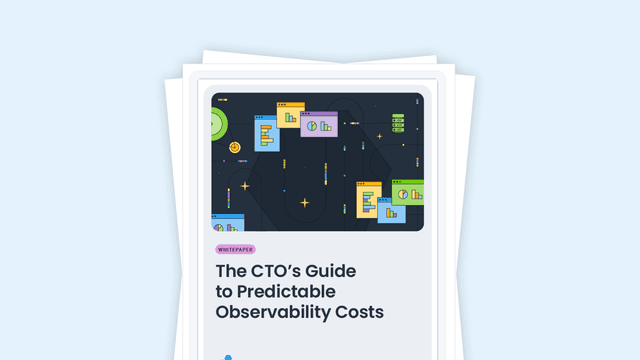Beyond Shift Left: Engineering Leaders Increase Speed and Resilience With Observability
We recently had the privilege of hosting several industry experts and technology executives across platform strategy, SRE, and engineering enablement for breakfast at our Observability Day in London.

By: Colin Burke


The CTO’s Guide to Predictable Observability Costs
Learn MoreWe recently had the privilege of hosting several industry experts and technology executives across platform strategy, SRE, and engineering enablement for breakfast at our Observability Day in London. We noted that they’re all facing the same fundamental tension: deliver faster, scale smarter, stay resilient, and somehow get ahead of what’s coming next. But how do you move fast without breaking things? And how do you prove the value of the things you don’t break?
At Honeycomb, we believe that observability isn’t just a tool to debug production. It’s a strategic lever. It’s how high-performing teams understand what’s happening inside their systems, align that knowledge across functions, and make better business decisions—faster.
Representing industries ranging from financial services to AI-powered communications, it was clear that integrated observability (one could say shifting observability not just left, but up) is key to building technology organizations that aren’t just effective, but future-ready.
Speed or stability? You shouldn’t have to choose
Everyone’s talking about the growing focus on cloud cost control. But it isn’t just about reducing spend—it’s about making engineers faster and more efficient by removing waste and improving the quality of insights. One of the leaders noted that scale is not just tools, but people and process. The common thread? Speed only works when it’s sustainable.
Engineering leaders often feel forced to pick between delivering quickly or delivering reliably. That’s a false choice.
The best teams we work with use observability to spot regressions early, reduce cognitive load, and get to the root cause faster. They create a culture of ownership where engineers feel confident shipping quickly, because they can see the impact in real time. They have feedback loops.
Resilience isn’t a blocker to innovation—it’s what enables it.
New to Honeycomb?
Get your personalized demo today.
Getting ready for AI—starting with today’s reality
There’s a lot of talk around AI and LLMs right now. But when we speak with leaders such as Oxa’s Steven Lawson-Turner, what we hear is more grounded: we’re already seeing AI-generated code enter production. How do we observe it? How do we trust it?
That’s the right question.
We need to prepare for unpredictability. When AI introduces novel behaviors into your systems, it’s no longer enough to monitor what you expect—you need to observe what actually happens.
At Honeycomb, we often say we’re built for debugging the ‘unknown unknowns.’ That’s what AI represents today. Observability gives you the ability to see how things are really working, not just how you think they are, and that’s foundational to building systems you can rely on.
Observability as a strategic lever, not just a tool
We’ve moved beyond “shift left.” Teams today need observability that spans the full lifecycle. Kesha Mykhailov at Intercom helped shape how product engineering teams use observability not just to fix issues, but to understand impact. His framing of, “How do you say observability without saying observability?” is going to be embedded in my mind forever. Additionally, Paula Kennedy at Syntasso talked about building platforms where observability is baked in, not bolted on.
What these leaders are doing is moving observability from a niche discipline to a shared language across engineering and the broader business.
That’s when it starts to drive outcomes. Not just lower MTTR, but faster time to market. Not just alerts, but SLOs that are built with business goals in mind. And ultimately, better customer experiences and better business results.
Final thoughts: insights over instinct
When we hosted our executive breakfast, I left with a clear impression: we’re all operating in more complexity than ever. AI, cloud cost pressure, talent gaps, architectural sprawl, expanding business context—these are real and growing challenges. But the teams who are thriving? They’re the ones who’ve made insight their operating system.
They don’t just instrument for performance. They instrument for understanding.
Observability isn’t just about logs and traces. It’s about alignment. It’s about making sure your smartest people have the visibility they need to move quickly, fix confidently, and prove the value of what they do.
If you’re navigating these challenges too, I’d love to continue the conversation. You can reach out to me on LinkedIn.
Want to know more?
Talk to our team to arrange a custom demo or for help finding the right plan.